Katya and Mirko are determined to ride through lesser known routes across the globe. Till now, they have pedaled through most of Europe, Middle East and Central Asia to South-East Asia and into India on their mountain bikes since 2002. TOJ caught up with them when they were in New Delhi.
The two Europeans have been cycling through Europe and Asia since 2002. Committed to eco-friendly travel, they have covered over 30 countries so far. With their mountain bikes and a trailer behind them, they came to India in early June this year, and travelled through the North-East, entering the country via Myanmar, and went up to Himachal. They intended to go to Ladakh and Kashmir, but their journey was cut short due to bicycle malfunction and the unforeseen Kashmir floods.
TOJ: Why did you take up cycling to see the world?
Mirko: We have been travelling on road in our car since 2000. In 2002, we were somewhere in Europe when we met these two amazing guys who walked everywhere they went. At that time, they were on their way to the Sahara desert. I think they influenced us, gave us ideas to be more environment friendly in our travels, and become more healthy. So from four wheels we came down to two. From cars we shifted to cycles.
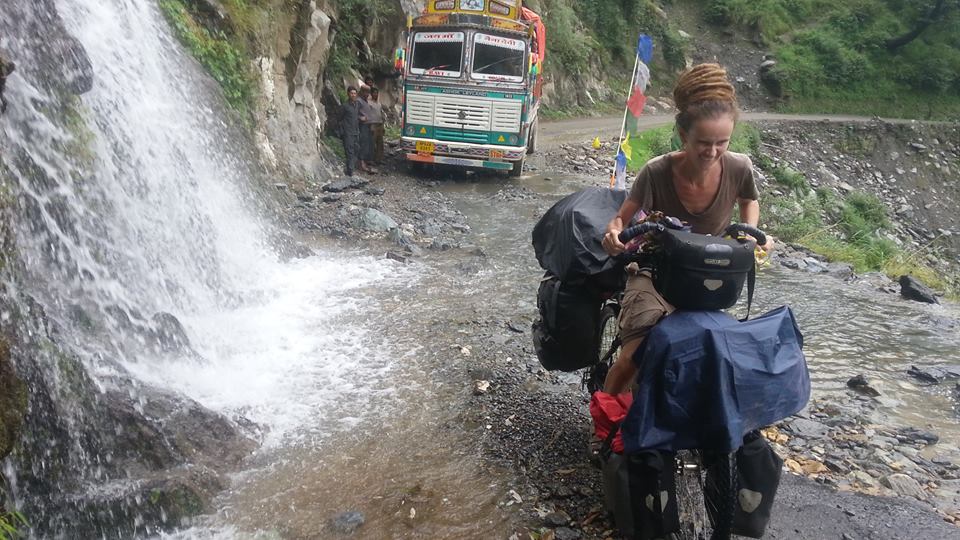
Katya: So from Europe we flew to Thailand and got hold of two second-hand mountain bikes. I have always cycled with my empty bicycle on city roads but to be fully loaded and do cross-country cycling avoiding the main roads was going to be a challenge for me. But I was excited.
TOJ: How were the initial days of cycling?
Mirko: It wasn’t easy. In 2002 you couldn’t find good equipment for the bicycles in Thailand, so I had to cycle with my heavy back pack on my shoulder. I got a rack in Malaysia so I could tie the backpack on the bike and then it was much more enjoyable. As time passed we slowly improved our bikes. You have to learn to improvise as you go.
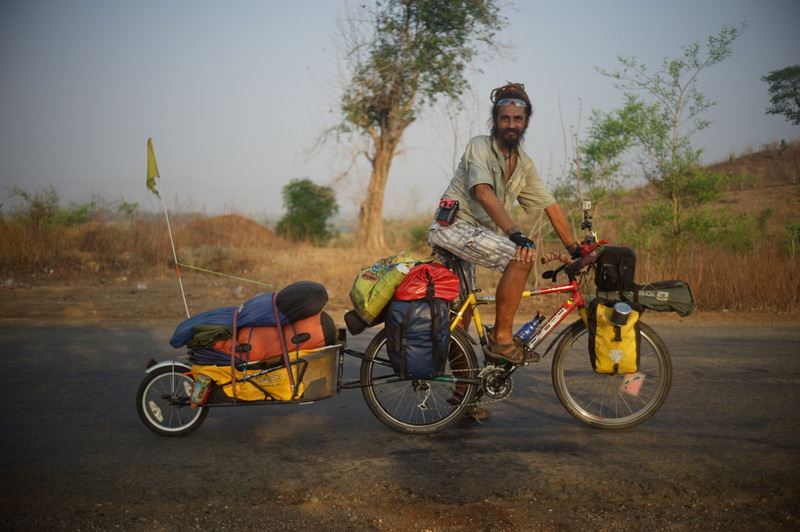
Katya: For me cycling in the mountains was very difficult. The first time we climbed the mountains was in Indonesia, from Medan which is by the sea to Berastagi 1300m above sea level. I was looking at the map and then at the mountains thinking, I don’t think I can do this. We only cycled in the south of Thailand and a bit of Malaysia where most of the terrain is flat with just a few small hills here and there.
I was cycling and suddenly, the slope became very steep. I shifted to my smallest gear but I was pedaling too fast so I exhausted myself because I was doing it completely wrong, My heart was beating so fast I thought it will jump out so I had to lay down by the side of the road and sleep for ten minutes just to have rest.
Mirko: You have to understand techniques of cycling how to pedal and change the gears and the art of breathing.
TOJ: What kind of cycles do you own? How do you manage your luggage?
Katya: Mirko pulls a trailer. Also, we have modified our bikes so there is lots of space for the bags. We don’t have to carry anything on our backs. I have a red and black Giant Iguana, which carries six bags
Mirko: Mine is a colourful Spyder but it is a custom-made bike really. The frame is from Czech Republic, the wheels from USA, the handlebar from Italy and the seat is from the UK. I pull the trailer. The axle is a little bit longer than the normal one. So the trailer connects itself to it, and then you just pull it behind you.
TOJ: What kind of essentials do you need to live on the road as cyclists?
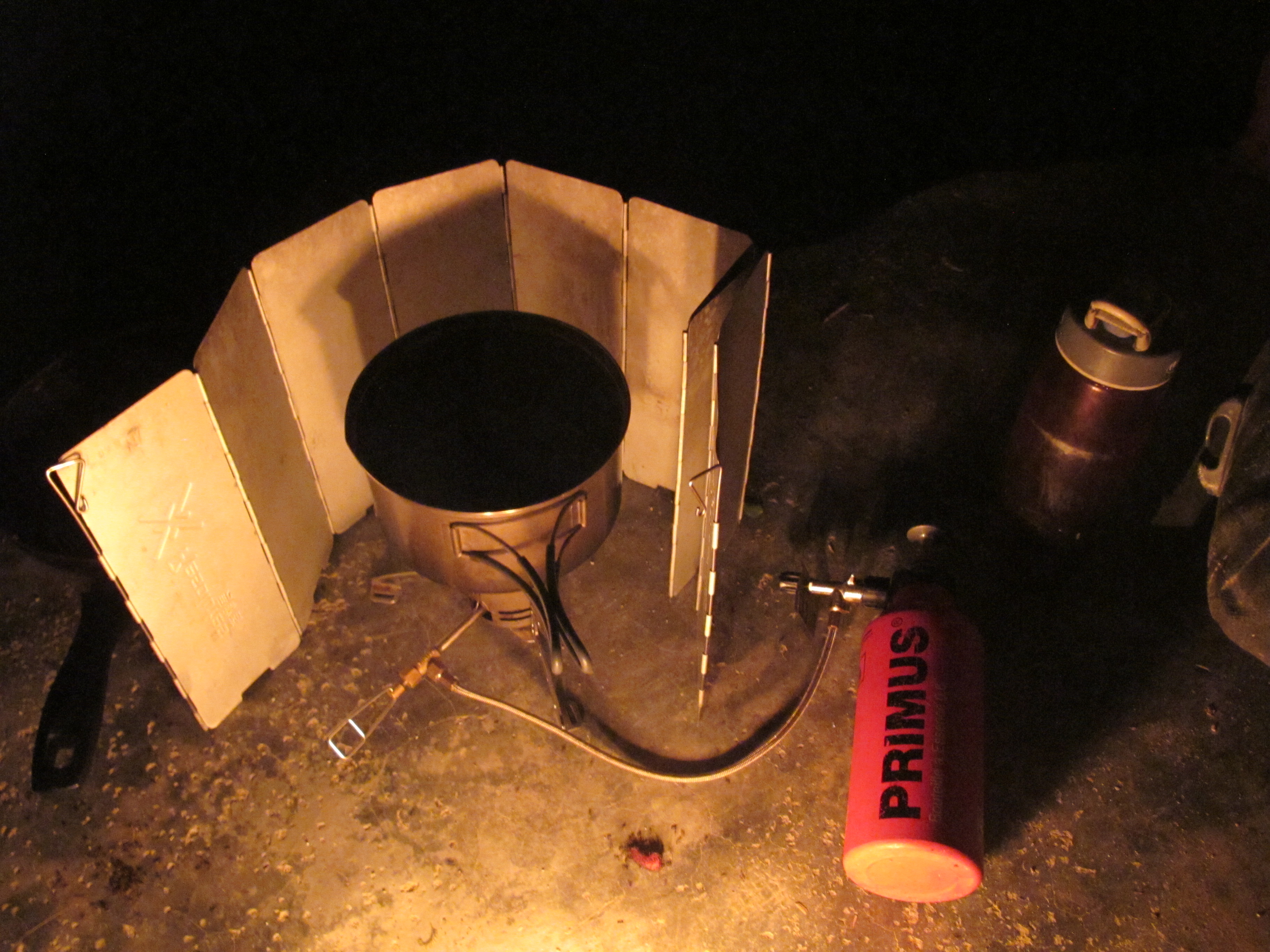
Katya: See for me, the most important thing is to be outside in nature with my bicycle. We have a tent, which is our house, we have our sleeping bags, as comfy as a bed. We have a little stove that serves as a kitchen, we mostly buy our own vegetables and cook ourselves. In the trailer we have things that we don’t use often, like winter stuff, and spare bicycle parts like tyres.
Mirko: And stuff we might need for emergency. We keep dry wood for making fire and tools. Once in Germany we were coming down big mountains and there was a fallen tree across the road. The only way to get on the other side was to saw it down. It was a big tree, and I was lucky to have kept a saw with me. You never know what hurdle you might find across on the road. You need to keep these things.
TOJ: How much of pre-planning do you need before you start your journey?
Katya: We like going through lesser known routes, avoid the main roads. So we figure out the route properly first. Then we decide on supplies, and any additional gear we might need for the terrain. Since we stay off populated areas, we buy supplies that could last us a week – dry things like nuts, seeds and vegetables.
TOJ: Tell us a little bit about your trip to India. When did you start, where did you go?
Katya: We have been wanting to cycle in India since 2002, but couldn't because the road from Thailand through Myanmar was shut. But it reopened earlier in the year, and we decided to make our trip happen.
From Myanmar we cycled to Manipur in North East India. Then from Manipur we went to Guwahati in Assam, then took a train to Delhi. From Delhi we went to Himachal Pradesh and then wanted to go to Kashmir and Ladakh but the mountains said no. There were floods in Srinagar. Also, Mirko broke his bike.
Route
We entered India from the North-Eastern side via Myanmar. We came to Imphal, went via Kohima to Dimapur in Nagaland. We took a detour to check out Majuli island by the Brahmaputra river because we had heard so much about its beauty.
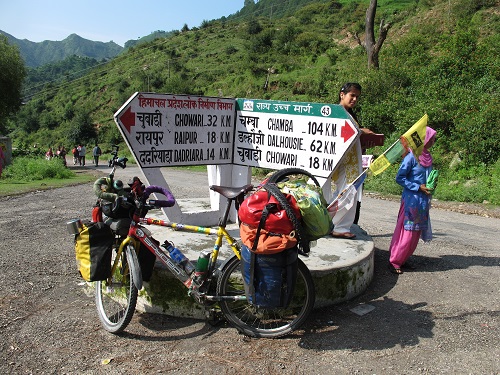
When cycling towards Shillong the front rim of my bike cracked. So we had to turn around and made our way to Guwahati, the capital of Assam. It was quite scary cycling downhill with only one pair of breaks on a very broken road. But I made it. Unfortunately, we couldn't find a spare rim so we took a train from Guwahati to Delhi, and fixed my bike.We took a train from Delhi to Pathankot where we stayed for a few days to recover from severe food poisoning. From Pathankot we cycled to Dalhousie. The locals told us we don’t need to return to Banikhet but we could continue on a very small road via Khajjiar to Chamba. It was a good choice. No traffic, good air and beautiful forest with many big old trees. From Chamba we continued towards Saach Pass.We must have cycled barely 20km from Saach Pass towards Pangi valley when Mirko’s bike broke. We wanted to make our way towards Kashmir but the bike plus the floods forced us to shelve our plans. So we went to Dharamsala instead where we stayed and volunteered to work with the NGO Waste Warriors.
In total, we covered about 1300km in India this time. We intend to come back again very soon and cycle through the Himalayas.TOJ: How do you gather information on routes, since you are so fond of going through roads less travelled. Mirko: We prefer to get information from other cyclists based on where we want to go. There are tons of communities for similar-minded people like us on the web. In Asia it is hard to find a good map, unlike Europe, so you need a GPS if you want to find to find a road with less traffic. Small roads and trails makes traveling much more interesting.
Katya: The way we work is, I look at the map (if available) and try to find the smallest possible way to reach our destination. Even though we have to do a few hundred km detour.
For example, most people who cycle to Srinagar take Jammu – Srinagar highway. But we don’t like busy roads. They are noisy, stressful and very dangerous especially in India. So you can’t really enjoy because you have to concentrate on the traffic to stay alive.
More than guide books we use information from other travelers we meet on the way or from blogs or websites. That’s why we carry supplies that would last at least a week.
When we cycled in Tibetan plateau in China, we came across a group of Chinese cyclists who were on their way to Lhasa. They were traveling without a tent or sleeping bag. It was quite interesting to see how differently we experience the same places by the same means of transportation. They chose to stay on the main road, with a lot of traffic and more possibility to find a restaurant and a place to sleep inside. They were depending on the people they met on the way.
But for us, it is the complete opposite. We are adventurists, and like to be independent, and stay far away from the main road if we can.
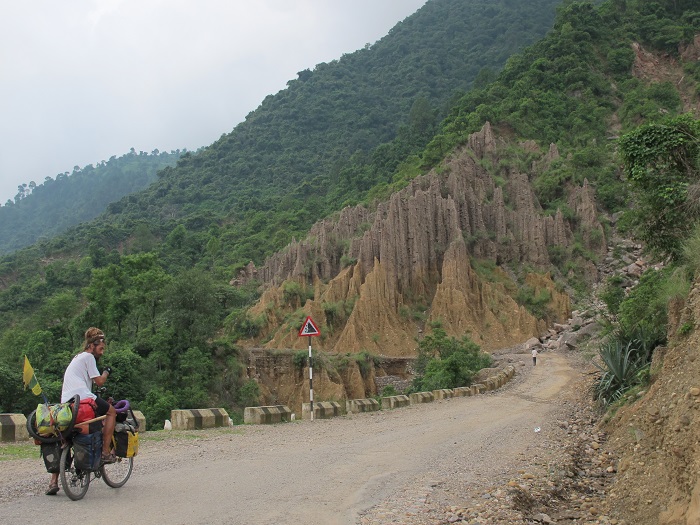
TOJ: What do you do for a living?
Katya: We make hand-made jewelry from natural materials which we gather and sell while we are on the road. Our creations are always inspired by the places we visit, the people and the natural world around us.
TOJ: What are your future plans?
Mirko: Well, we intend to cover the globe eventually. But at the moment, we have run out of money. We will go back to Thailand, which is our go-to base place when we have nothing left on us. We will make and sell jewelry, and with the money we will probably return to India to finish the route.
Katya and Mirko are currently in Thailand. You can get in touch with them here: katya.dragonfly@gmail.com
Images © Katya and Mirko













